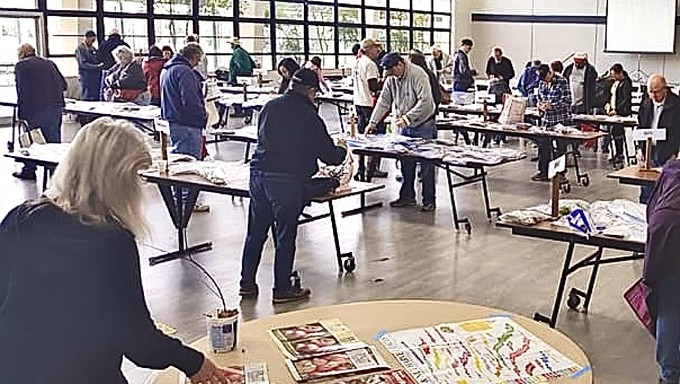
California Rare Fruit Growers host popular event Feb. 4

This was the Scion Exchange in 2018. The "swap meet" of fruiting wood this year will be held Feb. 4. Courtesy Sacramento chapter of the California Rare Fruit Growers
Learn how to expand your backyard orchard without planting more trees. And this fun and fascinating event has everything you need to add new varieties to your existing fruit trees via grafting.
It’s the annual Scion Exchange, one of Sacramento’s most popular winter gardening events. Hosted by the Sacramento Chapter of California Rare Fruit Growers, the exchange is like a big community swap meet of fruiting wood. Scions are young shoots that can be grafted onto other trees or root stock.
Set for Sunday, Feb. 4, the exchange will be held at La Sierra Community Center, 5325 Engle Road, Carmichael. CRFG members get the first crack at selecting scions from 10 to 11 a.m. (and also sharing their own). Then, the exchange is open to the general public from 11 a.m. to 1 p.m.
Want to be an early bird? Anyone interested in joining the CRFG chapter can do so in advance of the event. Membership is $29. Sign up here: https://crfg.org/home/join/.
For $5 admission, participants can select from dozens of varieties of deciduous fruit and nut trees from apples to walnuts. The assortment usually includes many heirloom varieties that are hard to find elsewhere.
Learn the basics of grafting, too, and how to add variety to your existing trees. Create a “fruit basket” tree with an assortment of plums, pluots and peaches on one trunk, or a “rainbow apple” tree that bears green, red and yellow fruit that ripens throughout the season instead of all at once. (Sorry, no citrus; just deciduous fruit and nuts are allowed at this exchange.)
What to bring? The organizers ask participants to bring exact change – $5 cash – and some supplies: Zippered plastic baggies (preferably 1 gallon size), masking or painter’s tape, a heavy marking pen (that way participants can label scions as they pick them up) plus a larger bag or backpack to put everything in.
Also, bring your wish list of varieties; you may be able to find them.
“Come join us to learn more about grafting! We encourage people to bring scions in labeled baggies from their own trees,” say the organizers. “Please insure they are not under patent and NO citrus. There will be tables of bags so please join us whether you can bring scions or not. We ask that you only take one or two scions from the varieties you want. Be sure to wrap tape around those scions and label them!
“There will be a few vendors selling items and also tables with items that you can root: figs, berries, etc. There will be chairs available to sit but wear comfortable shoes to wander around the tables.”
Details: https://sacramentocrfg.org or email sacramento@crfg.org.
Comments
0 comments have been posted.Sacramento Digs Gardening to your inbox.
Sites We Like
Garden Checklist for week of July 21
Your garden needs you!
* Keep your vegetable garden watered, mulched and weeded. Water before 8 a.m. to reduce the chance of fungal infection and to conserve moisture.
* Feed vegetable plants bone meal, rock phosphate or other fertilizers high in phosphate to stimulate more blooms and fruiting. (But wait until daily high temperatures drop out of the 100s.)
* Don’t let tomatoes wilt or dry out completely. Give tomatoes a deep watering two to three times a week.
* Harvest vegetables promptly to encourage plants to produce more. Squash especially tends to grow rapidly in hot weather. Keep an eye on zucchini.
* Pinch back chrysanthemums for bushy plants and more flowers in September.
* Remove spent flowers from roses, daylilies and other bloomers as they finish flowering.
* Pinch off blooms from basil so the plant will grow more leaves.
* Cut back lavender after flowering to promote a second bloom.
* It's not too late to add a splash of color. Plant petunias, snapdragons, zinnias and marigolds.
* From seed, plant corn, pumpkins, radishes, winter squash and sunflowers.